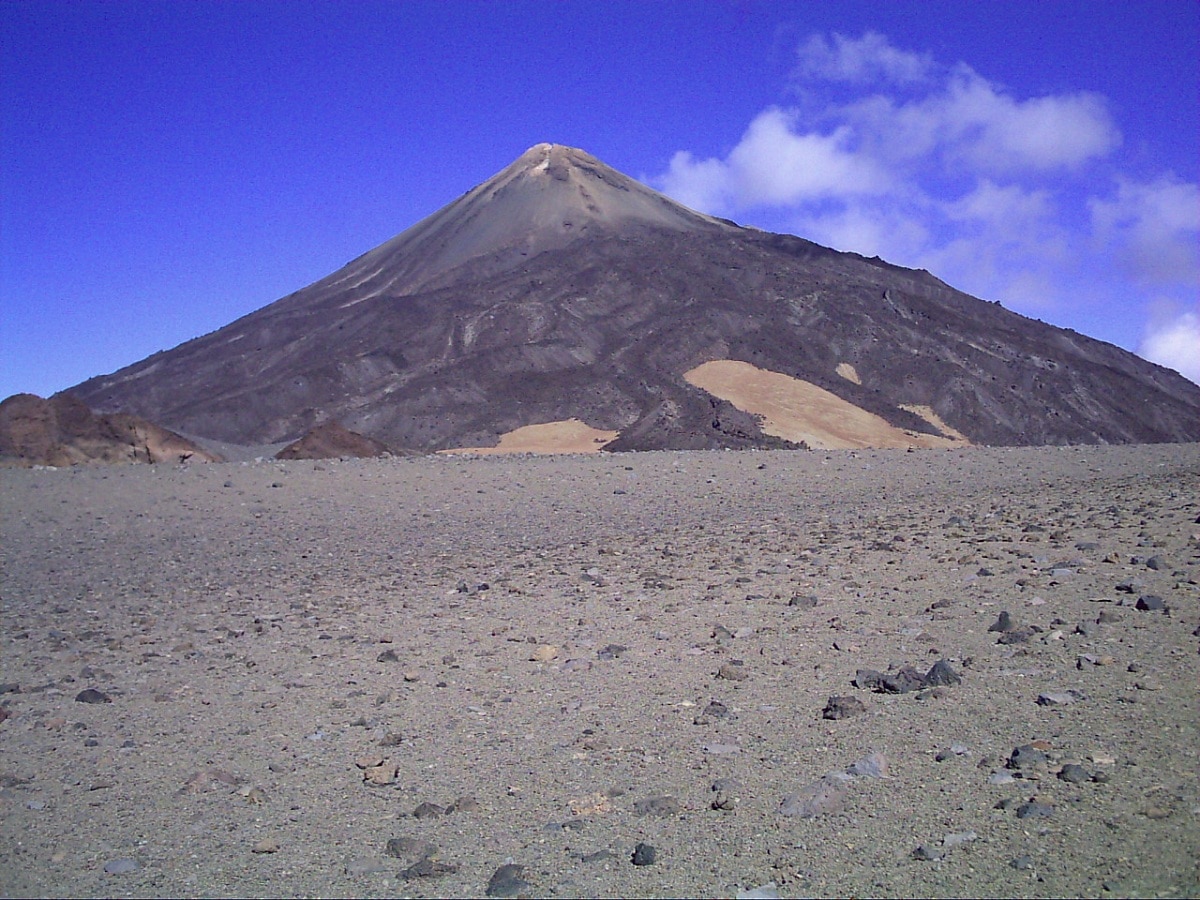
Many wonder what is the highest mountain in Spain. El Teide is the highest peak in Spain. It is located in Tenerife, an archipelago of the Canary Islands. It is also the highest point on land in the central Atlantic Ocean and the third highest volcano measured from the bottom of the oceanic crust. It is considered one of the greatest attractions in Spain and is located in the Teide National Park, declared a World Heritage Site by UNESCO. The aborigines of the area call it Echeide or Echeyde, and for them it is a sacred mountain.
In this article we are going to tell you everything you need to know about the highest mountain in Spain and its origin.
The tallest mountain of Spain

Like many of the most famous volcanoes in the world, it is a stratovolcano or composite volcano, which has accumulated over millions of years of continuous layers of lava flow with different main solid materials. Its entire structure is located in Las Cañadas, a crater with a diameter of 12 to 20 kilometers. The altitude is 3.715-3.718 meters and the height of the seabed is 7.500 meters. In fact, Teide and Picoviejo together form a single-layer volcano, the Picoviejo-Teide group of volcanoes. Both structures are from the same magma chamber, although they are generally described separately.
Mount Teide is considered active, although its last eruption dates back to 1909. In winter, the top of the mountain is covered in snow, providing a fascinating landscape for millions of tourists who come to the national park.
Formation of the highest mountain in Spain

Tenerife is a volcanic island that emerges from the ocean, so it is not surprising that its relief is characterized by mountains and volcanoes. In the early Miocene-Pliocene, three shield-shaped volcanoes appeared for the first time, the Teno, Adeje and Anaga massifs, which today they make up most of the Tenerife territory. In the second and third phases, the three plots interrupted their eruption, followed by a new period of volcanic activity, and then other structures were formed.
The central crater volcano formed in the third stage and evolved throughout the Miocene. The Las Cañadas crater can be the result of large-scale landslides, continuous large-scale eruptions, or a combination of the two that occurred when the central volcano collapsed 160.000-220,00 years ago. Later, the layered volcano Las Cañadas II was formed, and after the collapse another layered volcano, Las Cañadas III, appeared.
Eruptions

Not only is it the highest mountain in Spain, but it is also still active and has had numerous eruptions. According to the Smithsonian Global Volcanic Activity Plan, 42 eruptions have been counted and 3 have yet to be confirmed. Since its formation, Pico del Teide and its vents have released large amounts of pyroclastic material, but the first observed eruption occurred in 1492 because Tenerife was uninhabited for a long time.
The last eruption on the top of the mountain occurred around 850 AD Fortunately, there are no humans around so it is not as dangerous as Vesuvius, Merapi or Popocatepetl. However, in a radius of 100 kilometers, there are more than 766.000 people.
Geology
For the original people of these areas, the Guanches, the Teide volcano was considered a sacred mountain. Today, it is one of the best known volcanoes in the world. It is a stratovolcano or composite volcano. That is, it has been formed over millions of years thanks to the accumulation of successive layers of lava flows. And it is that the lava accumulates and cools as it flows through the steep places. Not only does lava accumulate, but also solid materials. All this makes the embedded structure take shape until the volcano is in its current position.
The entire structure of Teide is in Canada. Las Cañadas is a volcanic crater with a diameter of between 12 and 20 kilometers. The total height of Teide is 3.718 meters. If we register it as a result of the unevenness on the seabed, we can see that there is an altitude of 7.500 meters.
The Teide volcano and the Picoviejo volcano together form a single-layer volcano. This is a group of volcanoes. They all formed in the same magma chamber. Usually when describing two volcanoes, it is done separately. Between the two, Mount Teide is considered the most active. The last recorded eruption was in 1909. Although it seems that more than 100 years have passed, it is considered an active volcano on the geological time scale.
During the winter months we can see how the snow settles on the summit and offers an attractive landscape for the millions of visitors to the National Park. This makes Tenerife a very relevant tourist destination at all times of the year.
Curiosities of the highest mountain in Spain
We are going to tell you some curiosities of the highest mountain in Spain that you may not know:
- There are more than 1,000 archaeological sites in the national park. These sediments date back to the automobile display period, revealing information about many life forms that existed at the time.
- The foundation was forged in 40.000 years. Although this time period may seem long, it is a fairly short interval from a geological point of view. Therefore, it can be said that the air is a young volcano.
- The land around the volcano is the most fertile land on the planet. This is because volcanic ash contributes many nutrients to the soil.
- The eruption of this volcano has never registered human victims. This makes it very safe to live in Tenerife.
- Compared to other volcanoes, the shape of this erupting volcano is very rare.
I hope that with this information you can learn more about the highest mountain in Spain and its characteristics.